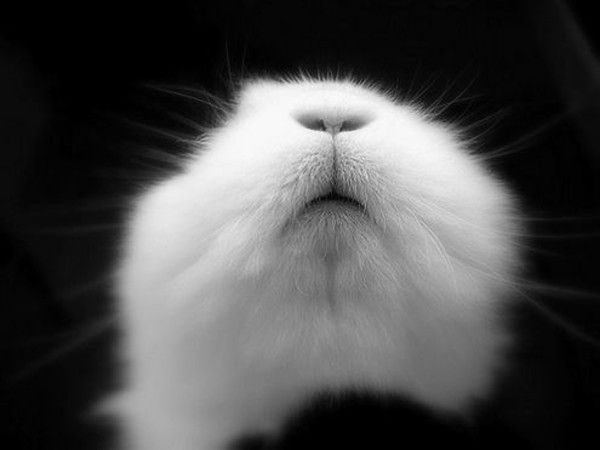|
|
Cute Bunny Rabbit
|
The rabbit's long ears, which can be more than 10 cm (4 in) long, are probably an adaptation for detecting predators. They have large, powerful hind legs. The two front paws have 5 toes, the extra called the dewclaw. The hind feet have 4 toes. They are digitigrade animals; they move around on the tips of their toes. Wild rabbits do not differ much in their body proportions or stance, with full, egg-shaped bodies. Their size can range anywhere from 20 cm (8 in) in length and 0.4 kg in weight to 50 cm (20 in) and more than 2 kg. The fur is most commonly long and soft, with colors such as shades of brown, gray, and buff. The tail is a little plume of brownish fur (white on top for cottontails).
Because the rabbit's epiglottis is engaged over the soft palate except when swallowing, the rabbit is an obligate nasal breather. Rabbits have two sets of incisor teeth, one behind the other. This way they can be distinguished from rodents, with which they are often confused. Carl Linnaeus originally grouped rabbits and rodents under the class Glires; later, they were separated as the predominant opinion was that many of their similarities were a result of convergent evolution. However, recent DNA analysis and the discovery of a common ancestor has supported the view that they share a common lineage, and thus rabbits and rodents are now often referred to together as members of the superclass Glires.
Rabbits are hindgut digesters. This means that most of their digestion takes place in their large intestine and cecum. In rabbits the cecum is about 10 times bigger than the stomach and it along with the large intestine makes up roughly 40% of the rabbit's digestive tract. The unique musculature of the cecum allows the intestinal tract of the rabbit to separate fibrous material from more digestible material; the fibrous material is passed as feces, while the more nutritious material is encased in a mucous lining as a cecotrope. Cecotropes, sometimes called "night feces", are high in minerals, vitamins and proteins that are necessary to the rabbit's health. Rabbits eat these to meet their nutritional requirements; the mucous coating allows the nutrients to pass through the acidic stomach for digestion in the intestines. This process allows rabbits to extract the necessary nutrients from their food.
Rabbits are prey animals and are therefore constantly aware of their surroundings. If confronted by a potential threat, a rabbit may freeze and observe then warn others in the warren with powerful thumps on the ground. Rabbits have a remarkably wide field of vision, and a good deal of it is devoted to overhead scanning. They survive predation by burrowing, hopping away in a zig- zag motion, and, if captured, delivering powerful kicks with their hind legs. Their strong teeth allow them to eat and to bite in order to escape a struggle.
|
|









